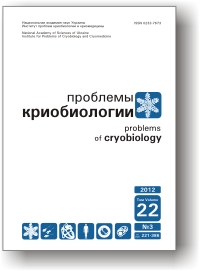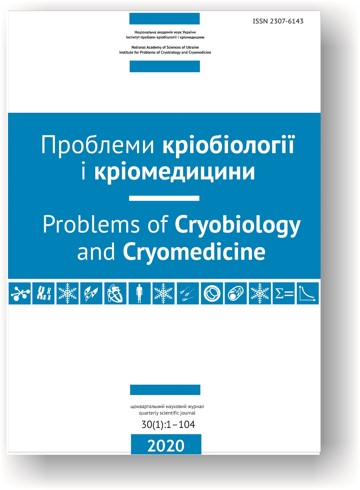Peripheral Blood Erythrocytes at Various Types of Hypothermia of Homoiothermal Organism
Keywords:
craniocerebral hypothermia, general hypothermia, immersion hypothermia, erythrocytes, erythrocytes forms, osmotic fragility, hemolysisAbstract
The research deals with effect of hypothermia of homoiothermal organism on populations, osmotic fragility and hemolysis rate in erythrocytes of peripheric blood of rats. The hypothermic state was initiated by different methods: craniocerebral hypothermia (down to rectal temperature (RT) of 32.5 ±0.5°C) on a background of blockade of thermoregulation centres (TC) using special device for programmed cooling, whole body immersion hypothermia (WBIH) (RT of 27.5 ±0.5°C) using Porsolt’s modified test (swimming in ice cold water) and whole body hypothermia by method of closed vessel according Anjus-Bakhmet’ev-Giaja (CVWBH) on a background of TC blockade resulted from increasing level of hypoxia-hypercapnia (RT of 16.5 ±0.5°C). Analysis of obtained results showed that independently of depth and the method of initiating hypothermia of homoiothermal organism we observed reversible changes differing by expression rate: the discocytes number decreased, the share of changed shapes increased (stomatocytes and spherocytes); as well as the rise in osmotic fragility and hemolysis level of erythrocytes. In 24 hrs post hypothermia we observed the tendency for rising discocyte content on account of flattened forms, an increase of proportion of changed erythrocyte forms (stomatocytes and spherocytes), the osmotic fragility of erythrocytes turned back to the control level, and after CVWBH it decreased even more, the tolerance of cells to hemolysis factors rised, especially after WBIH.
Downloads
Published
How to Cite
Issue
Section
License
Copyright (c) 2020 V. V. Lomako, I. F. Kovalenko, A. V. Shilo

This work is licensed under a Creative Commons Attribution 4.0 International License.
Authors who publish with this journal agree to the following terms:
- Authors retain copyright and grant the journal right of first publication with the work simultaneously licensed under a Creative Commons Attribution License that allows others to share the work with an acknowledgement of the work's authorship and initial publication in this journal.
- Authors are able to enter into separate, additional contractual arrangements for the non-exclusive distribution of the journal's published version of the work (e.g., post it to an institutional repository or publish it in a book), with an acknowledgement of its initial publication in this journal.
- Authors are permitted and encouraged to post their work online (e.g., in institutional repositories or on their website) prior to and during the submission process, as it can lead to productive exchanges, as well as earlier and greater citation of published work (See The Effect of Open Access).




